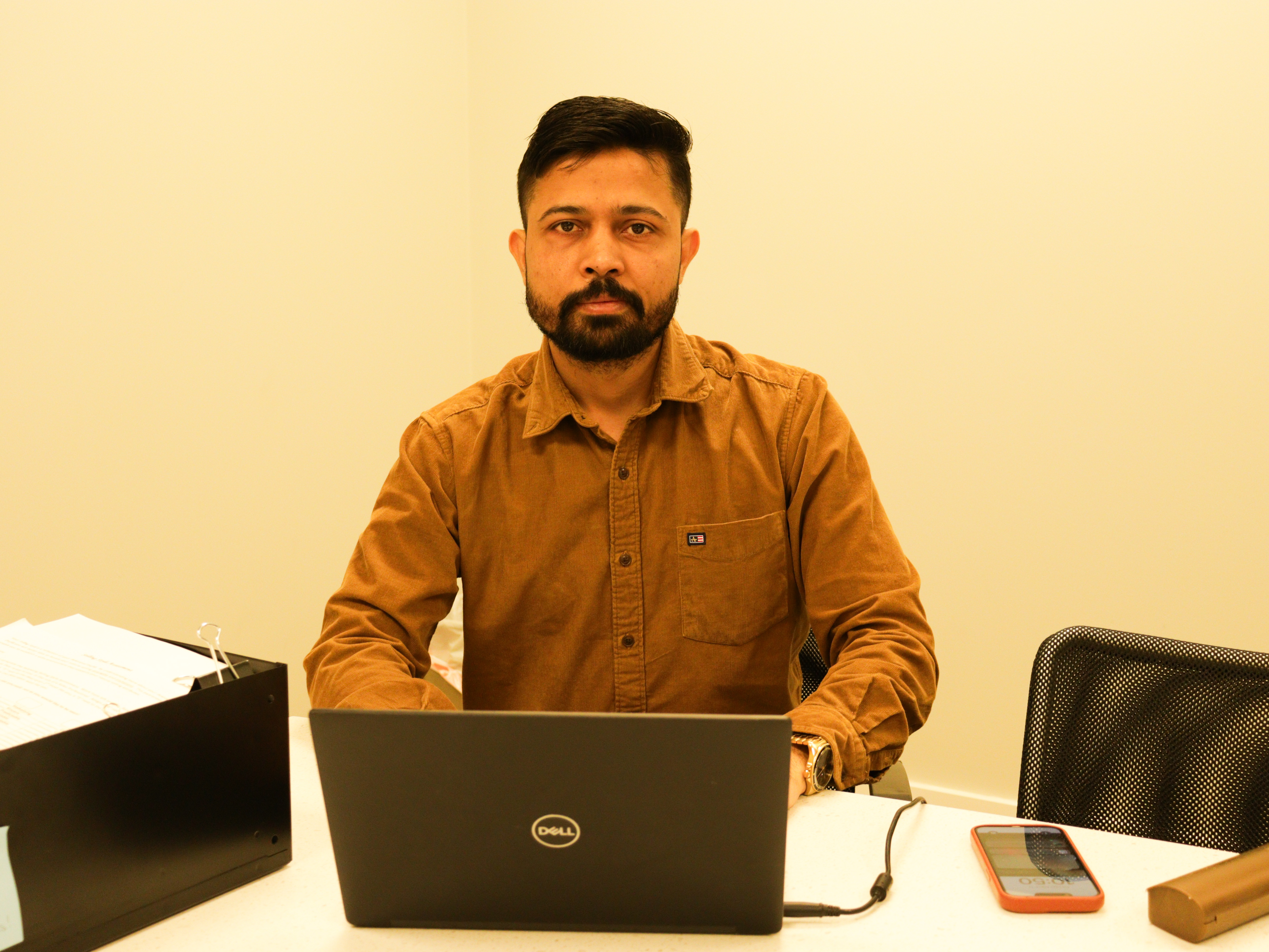Echoes of Blue Star operation can be still heard after 40 years
Dashmesh Culture Centre Calgary is organizing events starting from June 21 to June 30 to remember the martyrs of 1984’s Operation Blue Star.
Series of posters related to Punjab 1984 massacre displayed at the entrance of Sikh shrine- Dashmesh Culture Centre in Calgary, on June 4. The posters have the information related to the happenings during the incident. (Photo by Snehpreet Kaur)
"When we lose a family member in an accident, we are unable to forget it for years, but when incidents like Blue Star occur a whole community is unable to forget it for generations,” said Jagdev Singh Jachak, a committee member of gurudwara (Sikh Shrine)- Dashmesh Culture Centre, Calgary and a philosopher.
Nearly four decades have passed since Operation Blue Star, the Indian military's 1984 operation to remove militant religious leader Jarnail Singh Bhindranwale and his armed followers from the Golden Temple in Amritsar, Punjab. Despite the passage of time, the emotional and psychological scars remain deeply etched in the Sikh community.
Not only people lost their lives, but the building of Holy Akal Takht Sahib (Sikh Shrine) which is referred as a religious capital of Sikhs was also destroyed by attacking it with tanks on June 5,1984.
Painting of Akal Takht Sahib (Sikh shrine in Punjab, India) from 1984.Akal Takht is consider as the religious capital of Sikhs in Amritsar, Punjab (Photo by Snehpreet Kaur)
“The holy Sikh shrine Golden Temple was attacked by Indian army with weapons, which destroyed the dignity of the whole Sikh community,” said Jachak.
The fifth guru of Sikhs, Guru Arjan Dev was martyred by the Mughals on May 30, 1606. Every year on his martyrdom day, devotees go to shrines to bow their heads to remember Him. The incident was planned by the Indian government on that same day (May 30) in 1984 when a huge number of people went to different shrines.
“We don’t call it an incident or a massacre it is often called ‘Nasal Kushi’ which means destruction of generations,” said Kunwar Preet Singh, a volunteer at Dashmesh Culture Centre, Calgary.
According to the reports about 7,000 innocent people were killed in 41 different gurudwaras. The number of Sikh soldiers was in hundreds, but the Indian army was in thousands.
Many families in Calgary have direct connections to those who were in Punjab during the thundering days. People still remember their elders who were martyred during the incident.
“My maternal grandfather has seen two massacres first one was in 1947 and the second one was 1984…. He went to jail twice; it was never his fault, but only one thing that he was a Sikh…. From such incidents we can clearly see that this is done to scare the entire human race,” said Singh.
There are many stories and incidents related to the Punjab 1984 massacre.
Bibi Pritam Kaur, a follower of Sant Bhindranwale, lost her 18 days old child in the incident. Numerous such people lost one or many of their loved ones.
“Yet, the road to healing is long. We must continue to tell our stories, to educate our children, and to seek justice. Only then can we hope to heal”, said Jachak.
According to a book Sikh Nasalkushi, people who came to bow their heads in Golden Temple, were arrested by the Indian army and for about three days they were not given a single drop of water in a temperature of 45 C.
“Sikhs remember this incident till today, and in the month of June they organize stalls of free water which is mixed together with milk and sweet rose syrup called mitha pani (sweet water)” said Jachak.
Although the incident is remembered by the elders and the people who are connected directly or indirectly to the incident. But still the youth want to learn more about it.
“I personally want to know each and every detail of the incident,” said Nirlape Kaur, 20, who came to Canada when she was just six years old.
Every year the month of June is regarded as a month of peace and prayers to pray for the parted souls.





